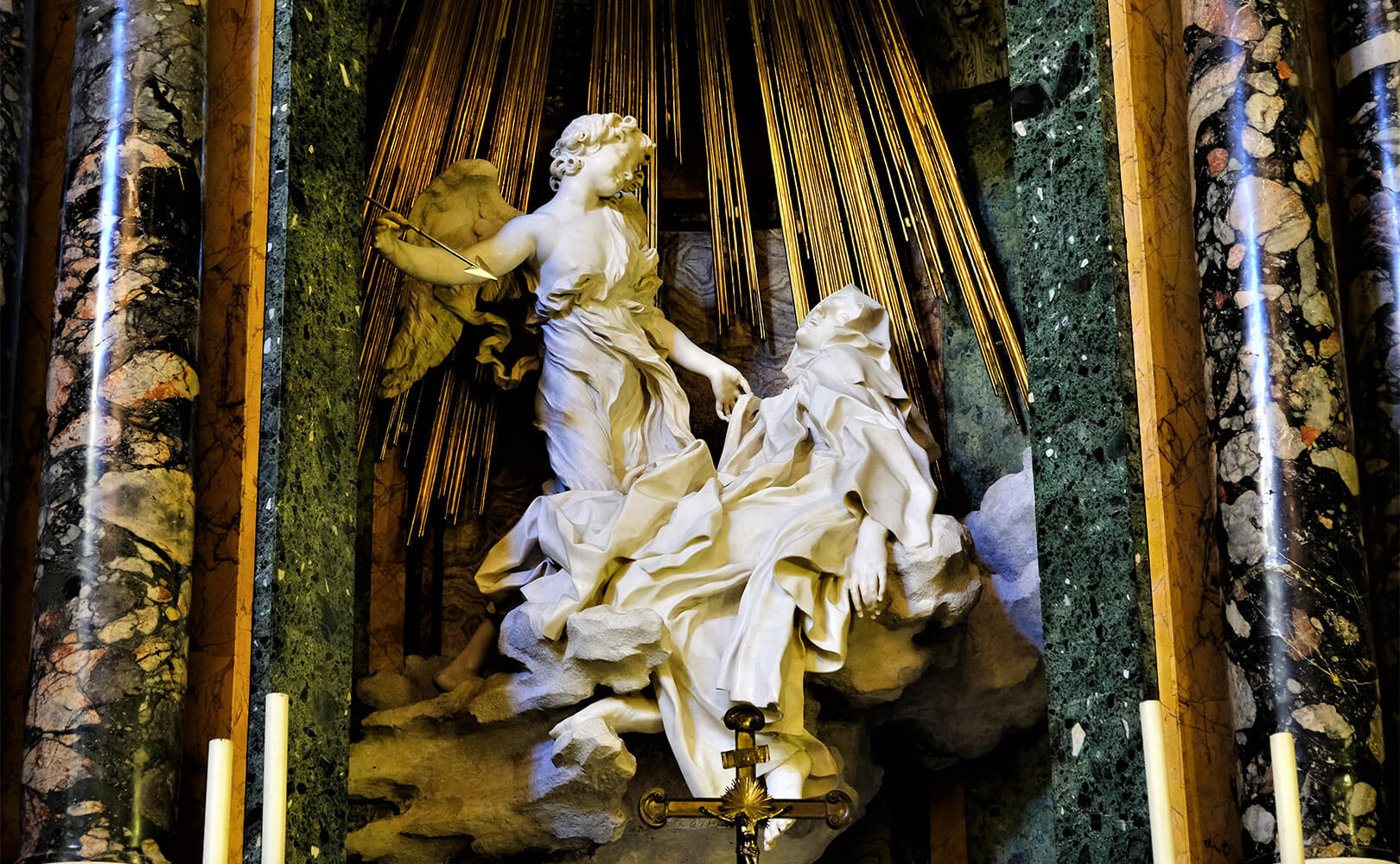On November 28, 1680, 340 years ago, under the reign of Pope Innocent XI, the eleventh pope he served, the genius symbol of Roman Baroque art died in Rome at the age of 81: the architect, sculptor, painter, and set designer, Gian Lorenzo Bernini (Naples 1598 – Rome 1680).
Pope Urban VIII (1568-1644), with whom he was already a friend, supported him and thus enabled his period of great success in the Eternal City; as soon as he was elected to the papal throne he told him: “It is your great luck, Cavaliere, to see Cardinal Maffeo Barberini Pope, but We are even luckier that the Cavaliere Bernini lives at the time of our pontificate” (F. Baldinucci, Vita del cavaliere Gio. Lorenzo Bernini, scultore, architetto e pittore, Firenze, Vangelisti, 1682, p. 10). After a period of distancing from pontifical court, not enjoying the favor of Urban VIII’s successor, Pope Innocent X (1574-1655), our artist was called by Pope Alexander VII (1599-1667) for very important works, including his architectural masterpiece: the two grandiose and harmonious colonnades of St. Peter’s Square, effective evocation of the solemn embrace of the mater Ecclesia, which complete Michelangelo’s project for the Vatican basilica and enhance the mighty Maderno’s facade.
Among Bernini’s works — churches, palaces, fountains, statues — we want to remember the masterpiece of his maturity: the Transverberation of St. Teresa, better known as the Ecstasy, a famous sculptural group placed in the left transept of the Roman church of Santa Maria della Vittoria, located in a few hundred meters from Termini train station, which he created between 1647 and 1651 on commission from the Venetian cardinal Federico Cornaro, there buried since 1653. “In the judgment of everyone, he did not produce by his hands marble worked with greater tenderness and design than this […]. Bernini said that this was the least bad work he had ever done” (D. Bernini, Vita del cavalier Gio. Lorenzo Bernini: descritta da Domenico Bernino, suo figlio, Roma 1713, p. 83).
Here too, as elsewhere in Baroque and Bernini’s art, we find a form of religious theater, in which painting, sculpture, and architecture come together for one of the most important examples of Baroque art. Hippolyte Taine (1828-1893), French critic and historian, describes it as follows:
“She [i.e. St. Teresa] is adorable. In a swoon of ecstatic happiness lies the saint, with pendant hands, naked feet, and half-closed eyes, fallen in transports of blissful love […]. Meanwhile an angel arrives, a graceful, amiable young page of fourteen, in a light tunic open in front below the breast, and as pretty a page as could be dispatched to render an over-fond vassal happy. A semi-complacent half-mischievous smile dimples the fresh glowing Cheeks; the golden dart he holds indicates the exquisite, and at the same time terrible shock he is about to inflict on the lovely impassioned form before him. Nobody has ever executed a tenderer and more seductive romance (H. Taine, Italy: Rome and Naples, New York 1871, p. 255).
This extraordinary sculpture captures the Spanish mystic, canonized in 1622, in a particular moment of her life, described in chapter 29 of her Autobiography, well known to Gian Lorenzo. It is as if Bernini – Carmelite father Rocco Visca, rector of Santa Maria della Vittoria, told us in 2017 – had made that thing his own before transforming it, albeit with small differences, into this marble group. In one of her ecstasies, saint Teresa saw an angel who, with a golden dart with a fiery iron tip, pierced her heart several times. At that moment she felt joy and pain. This group — the priest continued — introduces us Teresa in her femininity, her betrothal and her humanity: the beauty of a soul in love with God, pierced by love, who wants to make others know the beauty of her heavenly Spouse. Teresa was a soul in love with God: this wound of love is the antechamber of spiritual marriage with God.
Bernini’s masterpiece offered the inspiration to the Italian composer Pietro Mascagni (Livorno 1863 – Roma 1945) to write in 1923 a piece for orchestra, Visione lirica (Looking at Bernini’s Saint Teresa in the church of Santa Maria della Vittoria in Rome).
Mascagni comments:
“In these days of discomfort and dejection I have held on to a fixed vision: the vision of Saint Teresa, that famous and wonderful statue in Santa Maria della Vittoria, in piazza S. Bernardo. In Rome, in my studio I have a plaster cast of Saint Teresa’s head; and, in looking at it, I have always had a great impression: Bernini’s chisel has not depicted a saint, but has created an ideal mysticism, both sacred and profane, an infinitely sweet creature, whose expression is both ascetic and sensual. In these days I have always had that divine head before my eyes; and in that vision I composed a small piece for orchestra, which I titled: Looking at Bernini’s Saint Teresa. And I will perform it at the Augusteum. It’s a simple feeling” (Mascagni to Anna Lolli, January 4, 1923, in Epistolario, Vol. 2, Libreria Musicale Italiana, Lucca 1996, p. 101).
This score, performed in concert on January 14, 1923, at the Augusteo, the Roman concert hall capable of holding an audience of 3,500, by the Orchestra of the Accademia di Santa Cecilia conducted by the composer, is conceived for the following orchestral ensemble: 3 flutes, piccolo, 2 oboes, English horn, 2 clarinets, bass clarinet, 2 bassoons, 4 horns, 3 trumpets, 3 trombones, timpani, percussion, celesta, harp, organ and strings. The result is almost five minutes of contemplative music that flows with inner serenity and fully adheres to the subject.
You never know, even we post-moderns, admiring cavalier Bernini’s masterpiece and listening to Mascagni’s music, might declare that “with this sculptural group the Cavaliere surpassed himself, having completely mastered his art with this object of exceptional marvel”! (D. Bernini, ibidem, p. 84)


